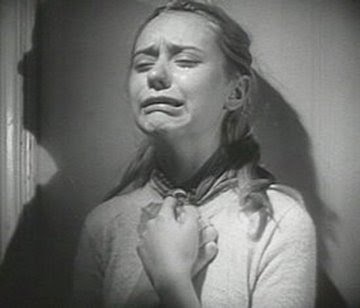And speaking of cartoon animals and their hilarious antics...
 |
| The Ant and the Aardvark, one of my favorite under-appreciated cartoon series. |
The Ant and the Aardvark (1969-1971) was a series of 17 short cartoons produced by DePatie-Freling Enterprises, the production company best known for the
Pink Panther series. When Ol' Pinky's theatrical cartoons were repurposed as a TV show called
The Pink Panther Show in 1970, the episodes were padded out with such back segments as
The Ant and the Aardvark, The Inspector, The Tijuana Toads and various other DePatie-Freleng productions.
The Pink Panther Show was one of my childhood favorites, and because it was not as widely-circulated or as heavily-merchandised as the
Looney Tunes, it seemed almost a little exotic to me. These cartoons were produced during the waning years of animated theatrical shorts, but I was not bothered by their slight cheapness. In fact, these cartoons had a sort of funky, minimalist look that went very nicely with their hip humor.
 |
| The whole Pink Panther Show gang |
 |
| Showbiz legend John Byner |
In terms of its underlying premise,
The Ant and the Aardvark is nothing out of the ordinary for cartoons. It's essentially another "big guy vs. little guy" scenario. The Aardvark tries ever more outlandish schemes to capture the Ant, but the wily insect always evades him. This was a setup that Warner Brothers and MGM had used dozens of times before in series like
Tom & Jerry, Bugs Bunny, The Road Runner and
Speedy Gonzales. But largely thanks to its acting and writing,
The Ant and the Aardvark does not feel like a retread of those other series. This was years before movies like
Antz or
A Bug's Life, so the Ant (Charlie Ant, to be specific) was probably the first of his kind to topline a major cartoon series, while the Aardvark was likely the
only representative of his species to hit the big time in animation. So the series has novelty appeal going for it. Even better are the voices. Both main characters are played by comedian, impressionist, and actor
John Byner.
 |
| From left to right: The Ant, The Aardvark |
Byner gives the Ant the voice of swingin', laid-back crooner
Dean Martin and the Aardvark the voice of cranky Borscht Belt comedian
Jackie Mason. Until
The Ren & Stimpy Show thought to pair up an ersatz Peter Lorre with a pseudo Larry Fine, this was probably the weirdest celebrity impersonation team-up in cartoon history. I mean, think about it -- Jackie Mason hunting Dean Martin! The writers for the series really have fun coming up with dialogue for these two characters, making the most of the stars' particular speech cadences and vocal tics.
So now, at long last, I am proud to present 6 glorious minutes of
The Ant and the Aardvark. Stick around a while and spend some quality time with these two. You'll probably be imitating them both before long. Also take note of
Doug Goodwin's super groovy theme song, which starts out as a Dixieland jazz number during the opening titles but gets a peppier, Herb Alpert-esque arrangement when used as a background cue.
Alas, the Ant and the Aardvark were hauled from their graves in 2010 to appear in the Pink Panther's short-lived new TV show,
The Pink Panther and Pals. They were redesigned and de-aged for the revival, and the Ant no longer sounds like Dean Martin. Their theme song is also AWOL. I don't like to think about it.
Oy.
P.S. - Apparently in Europe, there were
Ant and the Aardvark Pez dispensers! If you're thinking of getting me a gift, you could do worse.
 |
| These Pink Panther Show PEZ dispensers include the Ant and the Aardark. |


















































